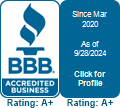
Navigating Student Loan Debt: How Your Career Choice Affects Your Financial Future.
Student loan debt is now a defining financial challenge for millions of Americans, surpassing $1.7 trillion in 2024. For many, a college degree is a pathway to a brighter future. But it also raises an important question: Are students setting themselves up for success or putting themselves on a path to financial hardship? The answer often depends on the career path they choose. Interestingly, the burden of student loan repayment is not the same across all professions. Some careers offer the potential for quick debt repayment, while others may struggle with loans for decades. Understanding how your career choice affects your ability to manage student loans is crucial for making informed decisions about your financial future.
1. How Do You Make The Decision To Take On Debt?
- Evaluate the Return on Investment (ROI): Will the expected salary in your chosen field allow you to repay the debt comfortably?
- Research Salary Expectations: Investigate the average salaries for your intended career and compare them to the cost of education.
- Explore Financial Aid Options: Look into scholarships, grants, and work-study programs to minimize your loan needs.
- Make Informed Decisions: Asking these questions before committing to debt can help you avoid feeling overwhelmed by repayment later.
2. High-Earning Careers: Quick Payoff, Big Burdens
Careers in medicine, law, and engineering often have high earning potential but also come with substantial student loan debt. For example, law school graduates typically owe between $100,000 and $150,000 in student loans. However, their higher salaries often allow them to repay loans faster. Medical students graduate with an average debt of $200,000, but with starting salaries for physicians ranging from $200,000 to $300,000, debt can be more manageable—though it still requires careful financial planning.
3. Lower-Earning Careers: Passion vs. Debt
Not all professions provide a high income, but many offer rewarding and fulfilling work. Social workers, teachers, and nonprofit professionals may struggle to manage large student loan balances due to modest starting salaries. For instance, a social worker with a median salary of $50,000 could find balancing living expenses and debt repayment difficult. It is essential to research programs like Public Service Loan Forgiveness (PSLF) or income-driven repayment plans to ease the financial strain.
4. Forgiveness and Relief Options by Career
Several careers, especially in the public sector, qualify for loan forgiveness programs. The Public Service Loan Forgiveness (PSLF) program offers relief for professionals in public service jobs, such as teachers, nurses, and government employees, after a set number of years in qualifying roles. Other options include the Teacher Loan Forgiveness Program and various state-specific programs for healthcare workers and educators. These programs can significantly reduce the long-term financial burden of student loans.
5. Side Hustles and Their Contribution to Loan Repayment
With the rise of the gig economy, many graduates are turning to side hustles to supplement their primary income and pay off student loans faster. Whether freelancing, ridesharing, or selling goods online, having an additional income stream can make a significant difference in tackling debt. Side hustles offer the flexibility to boost income without committing to a full-time second job, helping borrowers stay ahead of loan payments.
6. Income-Driven Repayment for Unpredictable Incomes
For graduates in fields like freelance work, the arts, or entrepreneurship, their wages vary monthly. So, loan payments will be challenging. It is where income-driven repayment (IDR) plans can be beneficial. IDR plans to cap your monthly student loan payment at a percentage of your discretionary income, providing flexibility and preventing default during lower-income periods. These plans can be helpful for those in creative industries or those starting their businesses.
7. The Role of Location in Student Loan Repayment
Where you choose to live can significantly impact your ability to repay student loans. High cost-of-living areas, such as New York City or San Francisco, can make it harder to meet your loan obligations, even with a higher salary. In contrast, regions with a lower cost of living may allow for more disposable income to go toward debt repayment. Consider housing costs, transportation, and taxes when deciding how to manage your debt after graduation.
8. The Psychological Toll of Student Loan Debt
It’s not just about the numbers—student loan debt can take a psychological toll on borrowers, leading to stress, anxiety, and even depression. According to surveys, about 60% of borrowers report feeling emotionally burdened by their student loans. It is common among those in lower-paying careers, where repayment feels like an uphill battle. Acknowledging the emotional aspect of debt can help borrowers seek support and plan for long-term financial wellness.
Bottom Line
Whatever career you choose, student loan debt will likely shape your financial future. With proper planning and resources, you can mitigate its impact and create a manageable repayment plan. By considering how your career, location, and even side hustles affect your ability to pay off loans, you can make more informed choices about your education and debt. Understanding your financial landscape will help you avoid financial stress and move forward confidently.


